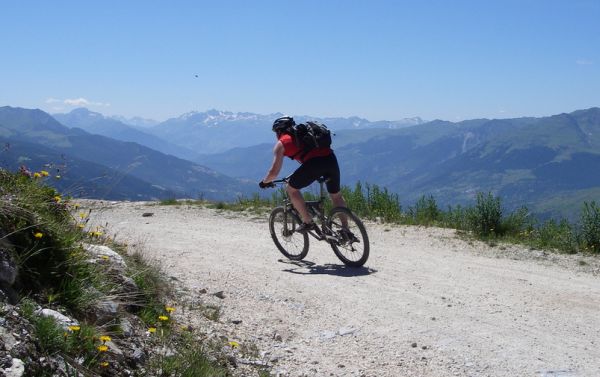Mountain biking is exciting but you need to know the basics for it to be as easy as in those YouTube videos. Learning how to ride a mountain bike requires a basic knowledge of physics, some planning and the right gear. As a beginner, you should start by building your skills in less challenging terrain and then proceed to more difficult mountain rides.
Read on to find out more about some basics of mountain biking:
Choosing a trail
Initially, choose a trail that doesn’t have much altitude and terrain changes. You could ask experienced mountain bikers or search the net which can direct you to the trails which are best suited for beginners.
Trail etiquette
Understanding proper trail etiquette is important for first-timers, especially if you’re cycling on multi-use trails. Always be friendly and keep the trail free of garbage, no carving names on trees or creating own shortcuts. Mountain bikers have to yield to runners and horseback riders and let them pass. Downhill riders should yield to uphill riders. Do not ride a trail if it’s closed. You’d be encountering wildlife while riding, so do give them their space and don’t spook them!
Choosing your bike and accessories
The bike you select must be according to your level of skill and fit you properly. Beginners should stay away from the high-end mountain bikes which might be harder to learn the fundamentals on. Some of the best mountain bikes under $2000 are available for you to help you master the sport. Be sure to check if the saddle fits your rear perfectly. Invest in a good helmet and a good pair of shorts and you’re set to hit the trail!
Check out some basic skills which you should master:
Shifting gears
Use your bike’s gears to your advantage. It’s about the timing – don’t be shy to try different gears on the trail which is how you can discover the best combinations which will work for you.
Braking
While braking, remember that the braking power is dependent on the weight of the tire – the greater the weight, more is the braking power that you have. While descending, your front tire has more weight than your rear tire, so braking with your front brake stops you from skidding. But by shifting your weight over the rear tire, you will increase the power of rear braking as well. This will balance both brakes and give you more control.
Riding uphill
While riding uphill, shift to a lower gear and ease your pedaling. Be seated for the longest time on a dirt trail as standing up may cause the rear tire to lose grip. If you’re climbing very steep hills, weigh down the front wheel by leaning over the handles and sliding forward on your saddle.
Downhill riding
Shift to the bigger chainring before you descend and stay loose. Keep the pedals parallel, stay loose, shift your weight and stand when required.
Mountain biking is a challenging sport which requires skill and practice, but brings a lot of enjoyment, adventure and a rush of adrenaline for adrenaline junkies.
Article Submitted By Community Writer




